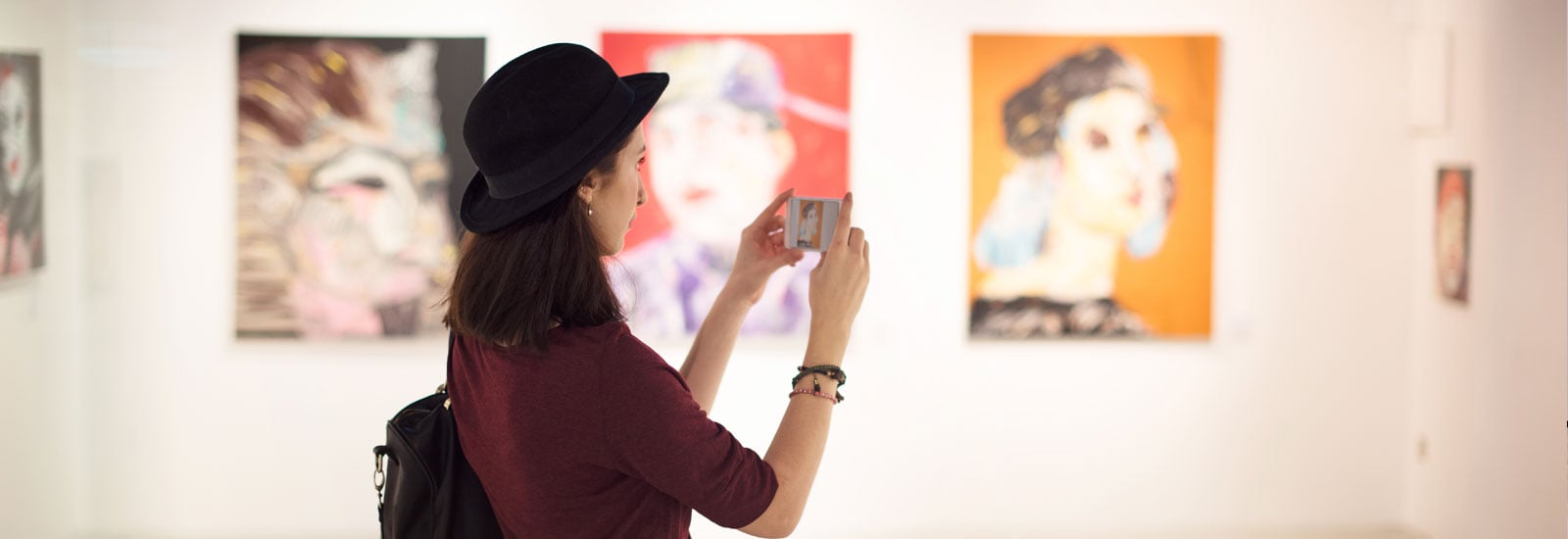When you think of museums, do you envisage hushed voices and dusty old things in glass cases, or modern, engaging hubs of new technology? Maybe not the first, but probably not the latter either. There is, however, an increasing focus on digital interactivity in today’s cultural learning environments. Modern museums are embracing the idea that knowledge is not only acquired through sight, but even more so through engagement and participation. And what’s a better place to meet visitors than where they’re already always present? - Online!
Participation Through Apps
Many museums worldwide have taken the leap of faith and had their own museum apps developed, making it possible for visitors to take guided, virtual tours, get more information on the museum’s permanent and occasional exhibitions, and enjoy customized maps or high-resolution close ups of famous pieces. In many cases, you can also share your favorite exhibitions with your friends on social media.
To understand why this is so important, you have to remember that museums are institutions dedicated to scientific, artistic and cultural learning - to educate the public. In USA alone, museums preserve, protect and share more than a billion objects. They hold the cultural wealth of generations!
Providing visitors with educational experiences is the very essence of museums, yet in the modern world, they’re not as much competing against each other for the public’s attention, as they’re competing against the massive supply of other entertainment options1. Netflix, Facebook and Pokemon Go are examples of such competitors. So it makes sense that museums are increasingly committed to meeting the visitor with engaging digital experiences.
Learning Through Play
Media supported learning is not a new notion. In fact, the concept is already so established that the Germans have an word for it - “Medienpädagogik” (media pedagogy). Studies show that modern technology enables improved participation and engagement, as visitors are invited into the exhibitions and get a sense of reward2 out of the experience.
Many museums have designed digital educational solutions specifically for kids and students. According to the UK Department for Digital, Culture, Media and Sport, 58,1% of children of 5-15 years have visited a museum in the last 12 months (2017/2018), and studies show that students who attend school engagement with an art museum experience an increase in critical thinking skills, historical empathy and tolerance. Children are important stakeholders in museums and should not be overlooked when designing technological engagement solutions.
As children of today are digital natives, it makes sense to centralize engagement effort around digital platforms. Some museums apps let families choose topics of interests and creates a customized route based on those topics, while providing interesting facts, quizzes and other interactive activities along the way. Other apps feature lesson plans and other activities specifically designed for student field trips.
Improving Visitor Comfort
Visitor comfort also plays a very big role in the learning environment. Several factors play into the visitors’ comfort, the most obvious being the physical comfort. Are there places to sit and relax and reflect, are there easily accessible lavatories? Psychological comfort, such as the sense of open spaces, the feeling of being represented in the exhibitions and the spatial organisation of the venue play an equally big role3.
Good orientation in the venue is a big part of the visitors’ psychological comfort. Some visitors like to plan the route ahead and navigate the exhibitions in a planful way, others prefer spontaneous and free-choice environments.
Both preferences can be met through indoor mapping of the museum venue. If the museum has an app, Planners can research the exhibitions in advance and organise the best possible route from entrance to exit through all their preferred exhibitions from home. Free-Choicers can enjoy the exhibitions in random order, but still find the easiest route to POIs such as lavatories, gift-shops and cafeterias.
Wayfinding kiosks and multi-touch surfaces could also provide an interactive element to museum venues, being both practical and engaging installations.
Want to know more about our wayfinding solutions for entertainment venues? Read our showcase of the Bella Center Copenhagen.
1 Vaz, Roberto, Paula Odete Fernandes, Ana Cecília Rocha Veiga. 2018. Interactive Technologies in Museums: How Digital Installations and Media Are Enhancing the Visitors’ Experience in “Handbook of Research on Technological Developments for Cultural Heritage and eTourism Applications”, published by João M. F. Rodrigues et al. Hershey PA: IGI Global
2 Hein, George E. 2002. Learning In The Museum. Routledge.
3 Learning In The Museum, Hein, George E. 2002
December 5, 2018




.png)